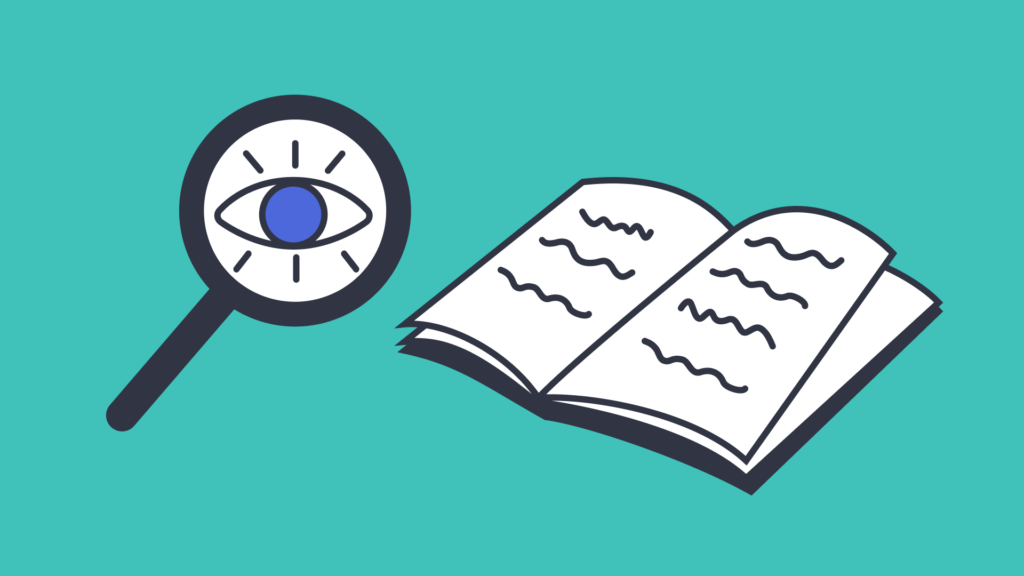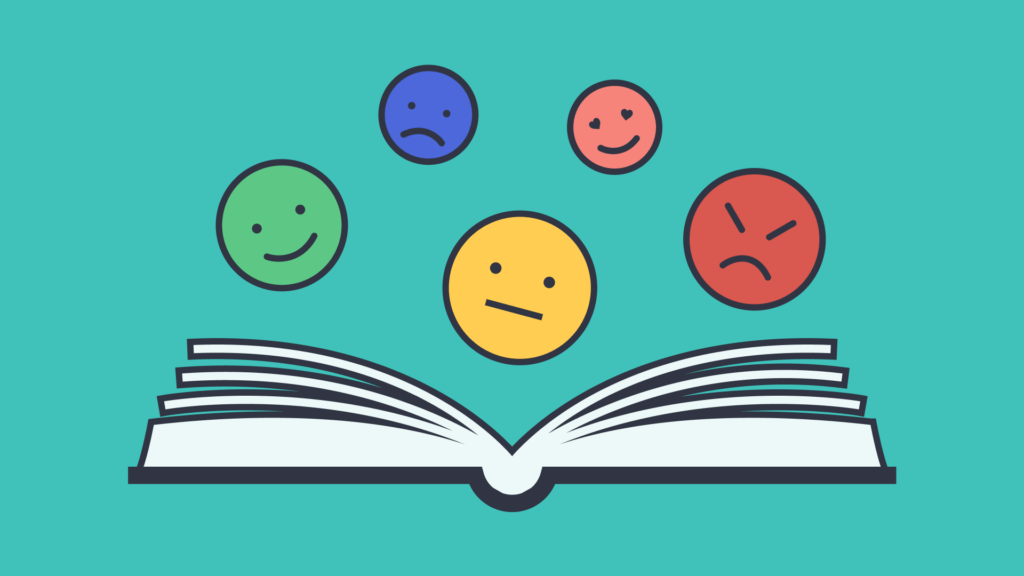Teaching students to analyze and interpret poems
In this guide
Poetry analysis
Poetry, a literary art by which a writer uses aesthetic and rhythm to express complex feelings – is everywhere. From the classics by Emily Dickinson to the contemporary musical artists releasing albums today, we’re surrounded by poems.
Poetry has the power to make us feel all sorts of things. Happiness, sadness, anger, wonder… and definitely confusion. Some poems are decidedly complex, relying on the reader to interpret hidden meanings to get to the meat of the story.
Important definitions
Poetry has an entire language unto itself. Before diving into an analysis, make sure to define the following:
- Poetic form – The Author Learning Center defines poetic form as “a set of rules that dictate the rhyme scheme, structure, rhythm, and meter of a poem”.
- Speaker – Refers to the voice or perspective the poet is using to express their message.
- Mood – The overall feeling or aesthetic communicated through a piece.
- Tone – The attitude, or point of view, of the speaker.
- Theme – The core message or overarching topic the poet wishes to communicate to the reader.
- Poetic device – One of countless ways in which an author presents an idea outside of its literal meaning. Some examples include metaphor, alliteration, and similes. Because there are so many, you may want to further define just the ones that are relevant to the reading at hand. Here are some more common examples.
How to analyze a poem
So, how do we go about using poetry in the classroom? For students to appreciate a good poem, they’ll need the tools to analyze and interpret what they’re reading. Below are the steps that will help your students break it down piece by piece.
Note that you do not necessarily have to present these steps in this order. One of my favorites is the classic; “The Road Not Taken” by Robert Frost, so let’s use that as an example.
1) Title of the piece
Why not start at the beginning? Read the title and sit with it for a minute. Given the title, try to guess what the poem might be about.
It’s important to note that, just like books, the title may or may not relay important information about the content. At the very least, it will provide insight to the poet’s thought process and provide a starting point by which to tackle the rest of the piece.
“The Road Not Taken” invokes an unused road. It makes me wonder if the road is physical, or metaphorical, and why the author didn’t take it. Was it a personal choice, or did they not have the option?
2) Read the text

Have your students read the poem – first silently, and then out loud. As the text comes to life, ask them to consider the following:
- What kind of language is used throughout the text? Are there any clues about the setting?
- What is the structure, or poetic form, of the text, and how does that impact the story being told?
- How is grammar being used in the text? Consider the utilization and placement of commas, dashes, semicolons, punctuation marks, and line breaks. Does it impact how the text is read?
Two roads diverged in a yellow wood,
And sorry I could not travel both
And be one traveler, long I stood
And looked down one as far as I could
To where it bent in the undergrowth;
Then took the other, as just as fair,
And having perhaps the better claim,
Because it was grassy and wanted wear;
Though as for that the passing there
Had worn them really about the same,
And both that morning equally lay
In leaves no step had trodden black.
Oh, I kept the first for another day!
Yet knowing how way leads on to way,
I doubted if I should ever come back.
I shall be telling this with a sigh
Somewhere ages and ages hence:
Two roads diverged in a wood, and I—
I took the one less traveled by,
And that has made all the difference.
The Road Not Taken by Robert Frost | Poetry Foundation
The language here is fairly simple English, if not a little out of date, and there are plenty of rhymes. There are four stanzas, each with five lines, that provide a consistent rhythm when read aloud. There are nine syllables in each line. I also noticed that some lines don’t end with a punctuation mark, which signals that I should move on to the next line as if it were part of the same sentence. The phrase “yellow wood” makes me think this is set during autumn, after the leaves have changed.
3) Identify the speaker
The best way to understand how a poem is meant to be communicated is to get to the bottom of who is telling it. Based on the language and content, what do we know about who is “telling” the poem? Are there any clues about their personality, age, gender, etc?
Another important part of understanding any message or media, including poetry, is identifying who the message was intended for. Who is the speaker addressing, and why? Use context clues to decipher the speaker’s intentions.
The speaker is using first-person language throughout the poem, so I can assume they are speaking about themselves. The content makes me think this is a personal reflection, perhaps written in a diary, or shared with someone very close. There aren’t any clues about the writer’s gender or background, but the way they are ruminating on a choice they made in the past makes me think they might be an older adult.
4) Interpret the mood and tone

Now that we know who is telling the story, how are they telling it?
The mood refers to the overall picture the poem paints. What is the atmosphere, or the vibe, of the piece? Is it angry, or lovesick? The type of words used and rhythm of the poem can convey how the speaker is feeling throughout.
Similarly, the tone of the speaker helps communicate their attitude. Has an adult ever accused you of “taking a tone” with them? Whether you meant to or not, you might have conveyed a negative attitude with your voice.
The mood of this poem reads to me as somber and reflective. Particularly, the line; “And sorry I could not travel both” invokes regret, or at least curiosity about another unknown path. The entire work feels very introspective. Tone-wise, words such as “maybe” and “perhaps” invoke a sense of uncertainty and self-doubt in the narrator.
5) Identify the theme
To understand the theme, or the core message of the poem, you’ll need to piece together everything you’ve learned so far. Have your students reconsider:
- What did the title and text tell me?
- Who was the speaker, and what do I know about them?
- Who was the speaker addressing?
- What was the overall mood and tone of the piece?
Some common examples of themes in poetry include love, nature, longing, death, identity, and courage – but there are countless others that you can select to support your curriculum and your students’ social emotional learning.
The title and text of this poem reiterated the presence of two roads, which are probably metaphors for the choices we face in our lives. The speaker is somber and introspective. Even towards the end of the poem, it seems like they are still not sure if they made the right choice. The narrator was addressing themself, or perhaps someone very close to them, since this is a very vulnerable piece. The mood and tone was serious and reflective. Overall, this poem presents themes of uncertainty, difficult choices, and fate.
6) Summarize the poem

So, what was it all about? Ask your students to summarize the key ideas communicated in the poem. A particularly effective way to do this is to lead your students line by line, translating poetic devices and any unclear messages as you go.
This poem is about a person who has to make a difficult choice, and is unsure which is the right one. They spend a long time contemplating it. Later on in the poem, after the choice has been made, the narrator still seems unsure of their decision. The absence of the choice not made seems to haunt the narrator afterwards.
And voila! Poem analyzed. Implementing these steps when introducing new poems will help your students make sense of even the most obscure of poetry.
Now that your students are masters of poetic interpretation, it might be time for them to try their hands at writing poetry.
Resources and further reading
- Bernabei, G.S. and Van Prooyen, L. (2020). Text structures from poetry : lessons to help students read, analyze, and create poems they will remember. Thousand Oaks: Corwin.
- Dalzell, S. (2018). Poetry 101 : from Shakespeare and Rupi Kaur to iambic pentameter and blank verse, everything you need to know about poetry. New York, New York: Adams Media.
- JOURNAL OF LANGUAGE AND LITERACY EDUCATION 22. (n.d.). Available at: https://files.eric.ed.gov/fulltext/EJ1068168.pdf.
- Naylor, Amanda, and Wood, Audrey. Teaching Poetry: Reading and responding to poetry in the secondary classroom. Routledge 2012.
- Oliver, Mary. A Poetry Handbook. Harcourt Brace & Company, 1994.
- Padgett, R. (2000). The Teachers & Writers Handbook of Poetic Forms.
- Poetry Foundation. (2021). Online Resources. [online] Poetry Foundation. Available at: https://www.poetryfoundation.org/learn/resources.
- Poets, A. of A. (n.d.). Tips for Teaching Poetry | Academy of American Poets. [online] poets.org. Available at: https://poets.org/national-poetry-month/tips-teaching-poetry.
- Rosen, M. (2016). What Is Poetry?.
- Timmermans, K.M. and Johnson, A. (2017). Introducing and Sustaining Close Reading and Writing Through Poetry. The Reading Teacher, [online] 71(3), pp.357–362. Available at: http://www.jstor.org/stable/26632584 [Accessed 2 Jun. 2024].
- Schulten, K. (2016). What’s Going On in This Poem? Exploring Poetry Through Open-Ended Questions. [online] The Learning Network. Available at: https://archive.nytimes.com/learning.blogs.nytimes.com/2016/04/07/whats-going-on-in-this-poem-exploring-poetry-through-open-ended-questions/ [Accessed 2 Jun. 2024].
- Somers, A.B. (1999). Teaching Poetry in High School. National Council of Teachers of English (Ncte).
- Stephenson, B. (2023). Analyzing Poetry. slcc.pressbooks.pub. [online] Available at: https://slcc.pressbooks.pub/literarystudiesatslcc/chapter/analyzing-poetry/ [Accessed 2 Jun. 2024].
- Strickland, D.S. and Strickland, M.R. (1997). Language and Literacy: The Poetry Connection. Language Arts, [online] 74(3), pp.201–205. Available at: https://www.jstor.org/stable/41482859.
- Williams, R. (2019). The poetry toolkit : the essential guide to studying poetry. London, UK ; New York, NY, USA: Bloomsbury Academic, Bloomsbury Publishing Plc.
- Wassiliwizky, E., Koelsch, S., Wagner, V., Jacobsen, T. and Menninghaus, W. (2017). The emotional power of poetry: neural circuitry, psychophysiology and compositional principles. Social Cognitive and Affective Neuroscience, [online] 12(8), pp.1229–1240. doi:https://doi.org/10.1093/scan/nsx069.

Jessica Pastore
briefcase iconMuseum Educator
Jessica Pastore is a museum educator living and working in New York City. Her background is in social studies education and world history. She has taught in both classroom and gallery settings for the past ten years.
Other posts
Want more content like this?
Subscribe for blog updates, monthly video releases, trending topics, and exclusive content delivered straight to your inbox.















